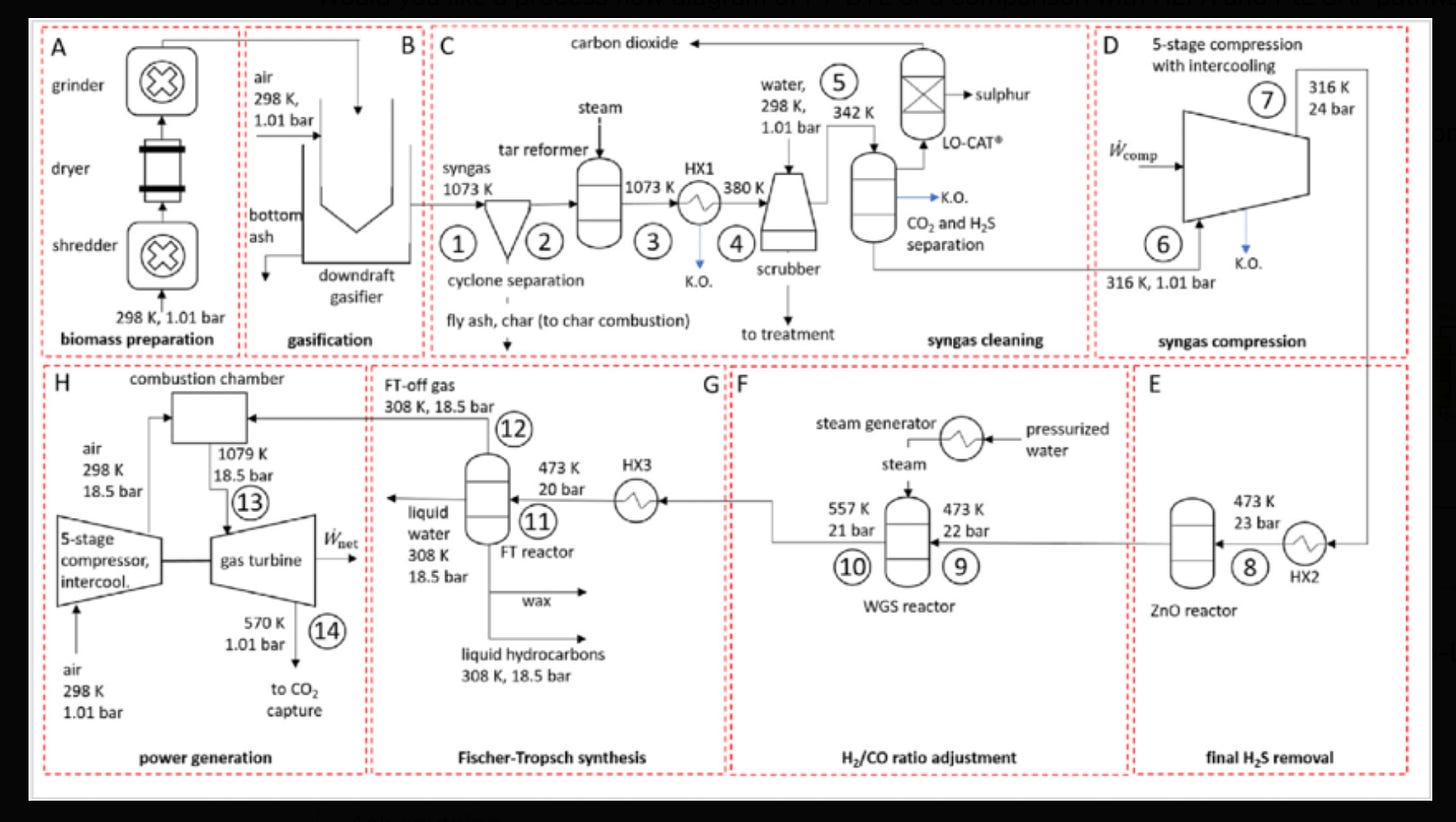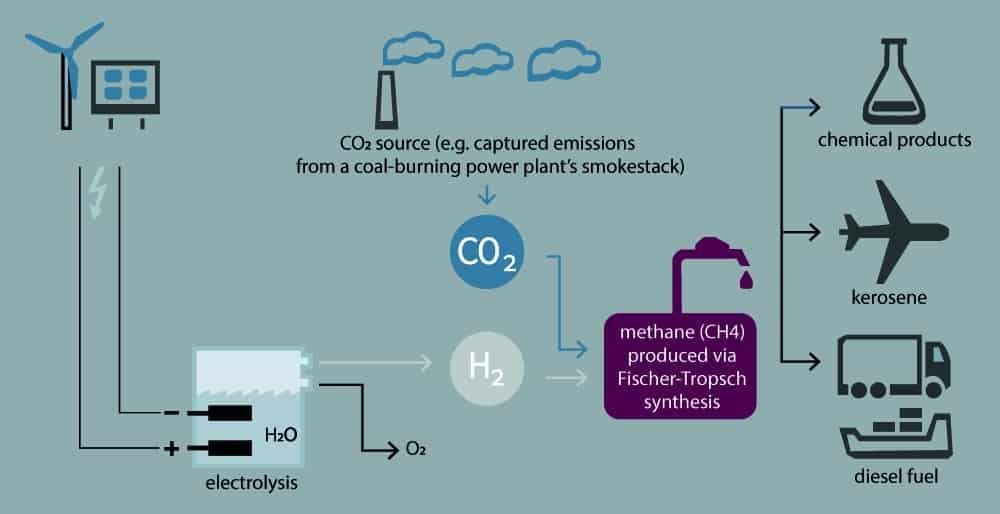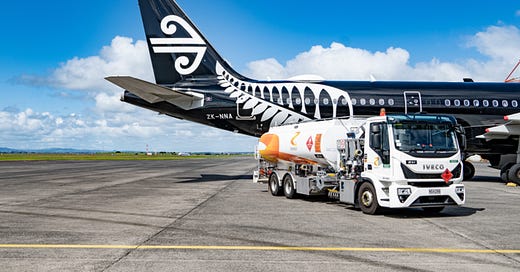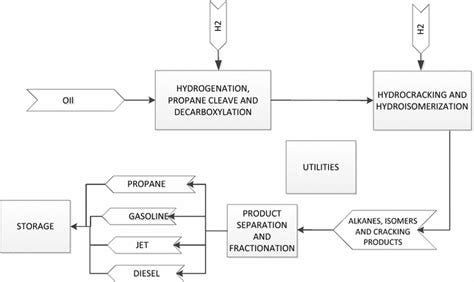In defense of Air New Zealand
Air New Zealand walks back emissions reduction targets after coming to the realisation that physics is the ultimate arbiter.
“For a successful technology, reality must take precedence over public relations, for nature cannot be fooled.” - Richard Feynman.
Air New Zealand has been copping some flak this week for walking back it’s emissions reductions initiatives.
The story from RNZ this week.
In July 2024 the national carrier removed its 2030 carbon intensity reduction target and withdrew from the global Science Based Targets initiative, which is considered the gold standard for corporate goal setting to combat climate change.
Carbon intensity is a measure of greenhouse gas emissions relative to a certain activity. In Air New Zealand's case, the target aimed for a 29 per cent reduction by 2030 in emissions produced, relative to goods and people transported.
That abandoned target has been replaced with a guidance statement on how the airline's effort to reduce planet-heating emissions are shaping up, the first in an annual series.
The statement said that as of 1 May 2025, Air New Zealand expects to reduce its "well-to-wake" net greenhouse gas emissions from jet fuel by 20 to 25 per cent by 2030, compared with a 2019 baseline.
Well-to-wake emissions included jet fuel production, distribution and combustion in flight, which the airline said added up to 92 per cent of its annual climate impact of 4.3 million tonnes of greenhouse gases.
Hannifin said that under the guidance emissions would fall to between 3.5 to 3.7 million tonnes in 2030 "and that's in a period of growth."
The astute reader will note that the Global Science Based Targets initiative is an emissions intensity target, not a total emissions target.
This means that participants in the scheme can actually increase total emissions as much as they like, as long as the per unit of freight or per passenger emissions drop. So, in essence is just a PR exercise rather than an actual commitment to lower emissions.
As such Air New Zealand is withdrawing from what is essentially a nonsense scheme in the first place.
But more importantly, why is it so hard to reduce emissions in aviation?
Because it is in essence an energy problem and thermodynamics is a ruthless referee.
To explain the challenge the aviation industry faces we first need to provide a bit of background.
The aviation industry understands from the beginning that energy density is critical. Planes don’t have a lot of space, and the weight of the fuel is part of the total payload they can carry. As such to maximise the number of passengers and cargo they need the most compact, lightweight, and energy dense fuel possible, which is currently kerosene.
The airframes of modern aircraft are very aerodynamically efficient so there are not a lot of gains to be made there. This meant that achieving emissions reductions all comes down to fuel substitution.
So, the industry went looking for a fuel substitutes with green credentials and came up with two candidates, biofuel (which includes 2 processes) and synthetic aviation fuel (SAF).
Now, it’s important to note that these aren’t really fuel substitutions. The reason I say this is because they are both hydrocarbons, essentially chemically identical to kerosene, but produced from non-oil sources.
We could refer to them and bio-kerosene and synthetic kerosene.
Note that these fuels will also produce exhaust emissions the same as kerosene when burnt, but because the feedstock is from “renewable” sources, these emissions are considered to be circular. For example the next round of trees that grow will sequester the exhaust gas emissions from burning the bio-kerosene.
So now we have two potential fuels that are lightweight, energy dense and directly compatible with all the existing aviation industry infrastructure.
Sounds great! But there’s always a catch.
The airline said its 10 per cent goal is contingent on being able to access "appropriate volumes of SAF at reasonable prices", which it said will rely on outside developments.
“Outside developments” in this case is code for magic, as it is only magic that can overcome the fundamental physical problem here.
1) Aviation Biofuels (bio-kerosene).
Bio-fuels for aviation come in two forms:
a) The HEFA process:
This process transforms renewable oils and fats (like tallow and waste oil) into kerosene jet fuel.
The process works by cleaning the oils then running it through a series of processes including hydrogenation, cracking, and isomerization. Each step uses a lot of energy for process heat to condition then break down the long hydrocarbons chains into the C8-C16 kerosene range.
It is the leading aviation biofuel technology today because it has the highest EROI of the two options, but faces scaling constraints due to feedstock availability and hydrogen sourcing. There is simply not a enough food waste fats and oils to produce millions of litres of jet fuel each day. Hydrogen production is mostly from reformed natural gas which doesn’t fit well with the bio fuel narrative either.
b) The FT-BTL process:
This is the Fischer-Tropsch Biomass to Liquids process. This is an incredibly complicated process that takes wood or grasses biomass and converts it to kerosene jet fuel.
It’s very energy intensive involving high temp gasification to produce syngas, cleaning and conditioning the syngas, passing CO and H2 over a catalyst to produce hydrocarbon, then multistep product upgrading to get to the final product.
It’s possible but its not really viable due to the complexity and amount of energy required to run the process.

2) Aviation Synfuel (synthetic kerosene).
Its gets even more complicated at this point. The synfuel process in order to have green credentials for aviation requires hydrogen to be produced through electrolysis and carbon dioxide to be captured from the atmosphere or industrial exhaust gases. They are then combined via the Fischer-Tropsch process followed by a multistep product upgrading process to get to the final product.

EROeI (Energy Return On Energy Invested)
The executive summary is this:
The substitution fuels are all energy intensive to produce and this will always be the case because it involves breaking and reforming chemical bonds.
There is no way around this. The processes could get slight more efficient but physics is unyielding and every transformation in a process requires energy and produces loses.
The EROeI can be coarsely translated into a multiplier of the fuel cost. HEFA as the best candidate with about 1/7th of the EROeI of conventional Jet A-1 will roughly translate to a fuel approximately seven times more expensive.
How much can people really afford to pay?
The criticism of Air New Zealand (that they should maintain their green targets and not back out) is based on fantasies of a world where physics follows feelings and magic is possible.
Unfortunately that is not the world we live in. Physics does not care about our feelings and every transformation has an energy cost. The more complicated a process becomes the more energy it requires.
Given the energy intensity of producing these alternative fuels and the highly disperse feed stocks the draw from it is highly likely that they would actually increase the full lifecycle emissions of flying.
I’m with Air New Zealand on this one. Don’t make promises that physics dictates you can’t keep.
Now, if we are going to stop wasting money on these feel good wild goose chases can we please have some cheaper regional airfares please?
Hope you’re all having a great weekend.
Larry







Thanks for a fact based summary of what I long suspected. SAF = Silly Aviation Fantasy. Lifting hundreds of tonnes into the air takes a lot of dense energy X all the humans currently in the air, at any one time (1 M+) = the urge to fly wins and at a cost the masses can afford.
Yes, "Air New Zealand walks back emissions reduction targets after coming to the realisation that physics" and I would add homegrown aviation fuel, are "the ultimate arbiter."
In the meantime, domestic passengers (NAC) will continue to subsidise its loss making, ozone layer depleting overseas arm (TEA). The solution is to go electric or hydrogen which is now sadly now, not an option because our largest hydroelectric generator is committed to the overseas owned massive polluter at Tiwai Point